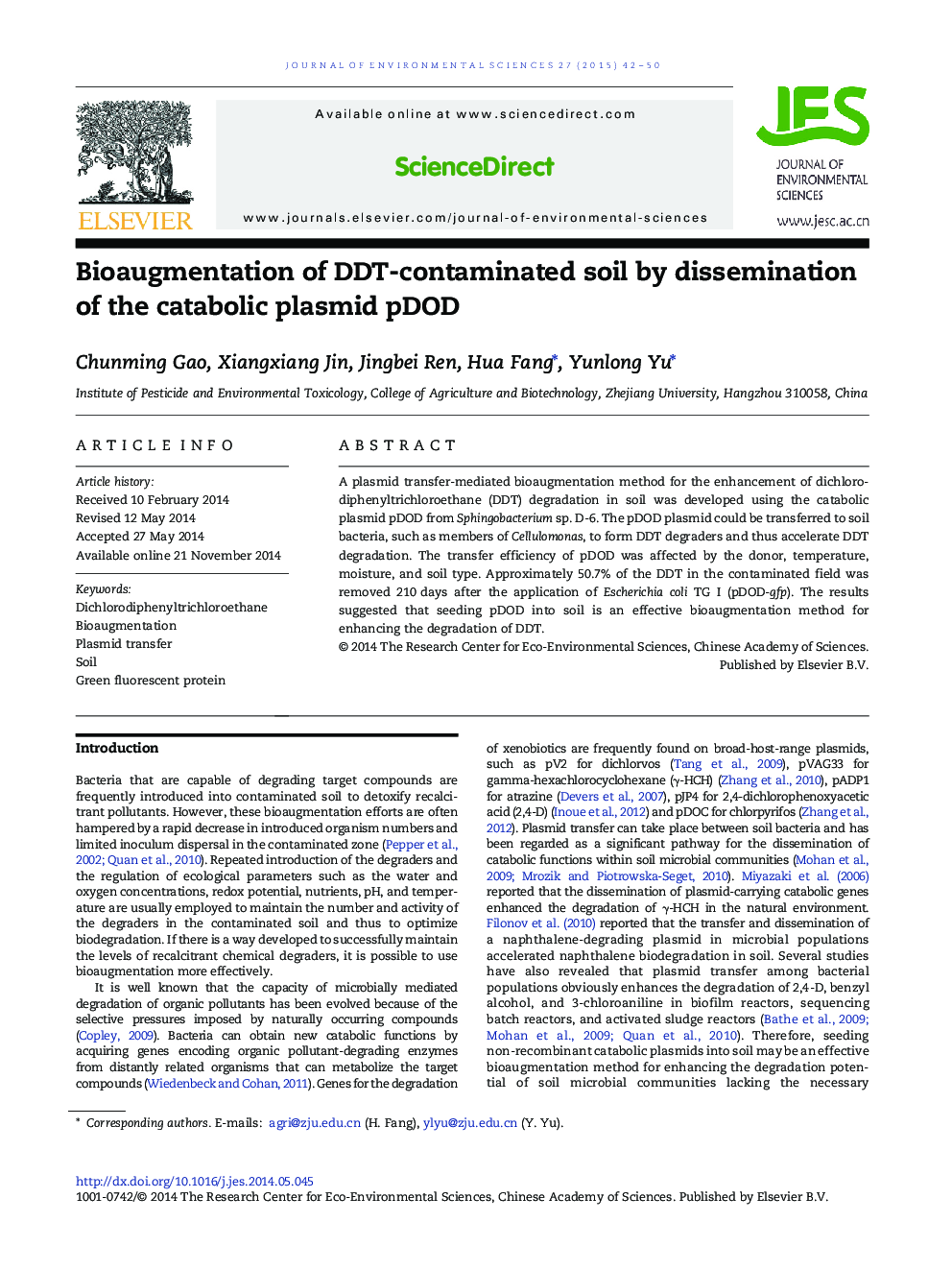| Article ID | Journal | Published Year | Pages | File Type |
|---|---|---|---|---|
| 4454170 | Journal of Environmental Sciences | 2015 | 9 Pages |
Abstract
A plasmid transfer-mediated bioaugmentation method for the enhancement of dichlorodiphenyltrichloroethane (DDT) degradation in soil was developed using the catabolic plasmid pDOD from Sphingobacterium sp. D-6. The pDOD plasmid could be transferred to soil bacteria, such as members of Cellulomonas, to form DDT degraders and thus accelerate DDT degradation. The transfer efficiency of pDOD was affected by the donor, temperature, moisture, and soil type. Approximately 50.7% of the DDT in the contaminated field was removed 210 days after the application of Escherichia coli TG I (pDOD-gfp). The results suggested that seeding pDOD into soil is an effective bioaugmentation method for enhancing the degradation of DDT.
Keywords
Related Topics
Life Sciences
Environmental Science
Environmental Science (General)
Authors
Chunming Gao, Xiangxiang Jin, Jingbei Ren, Hua Fang, Yunlong Yu,
